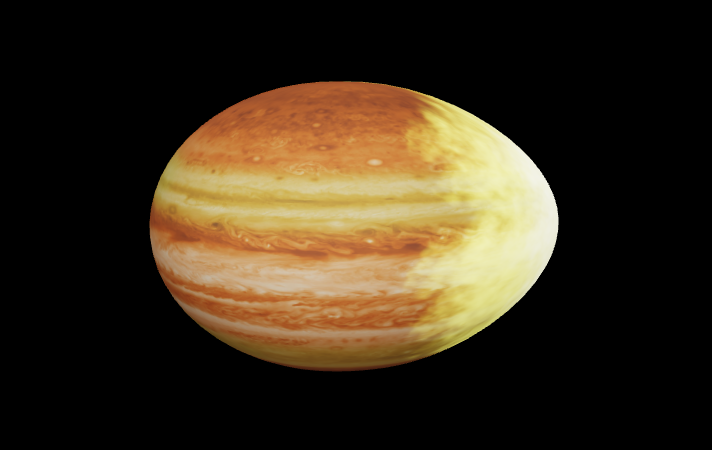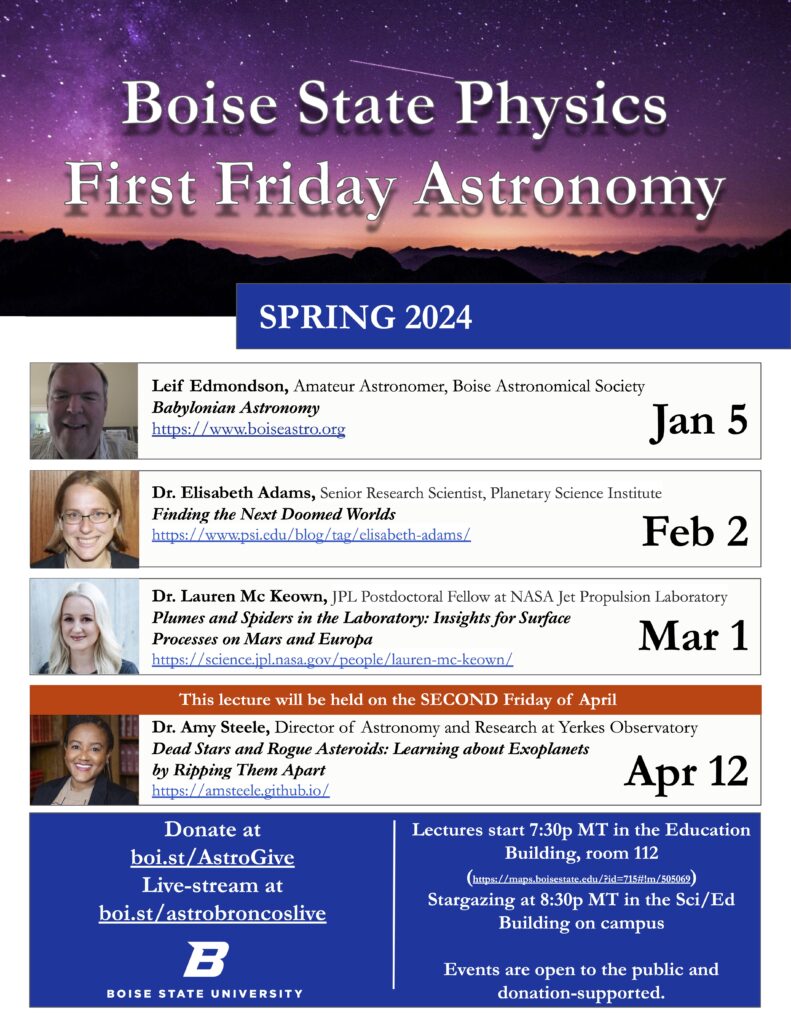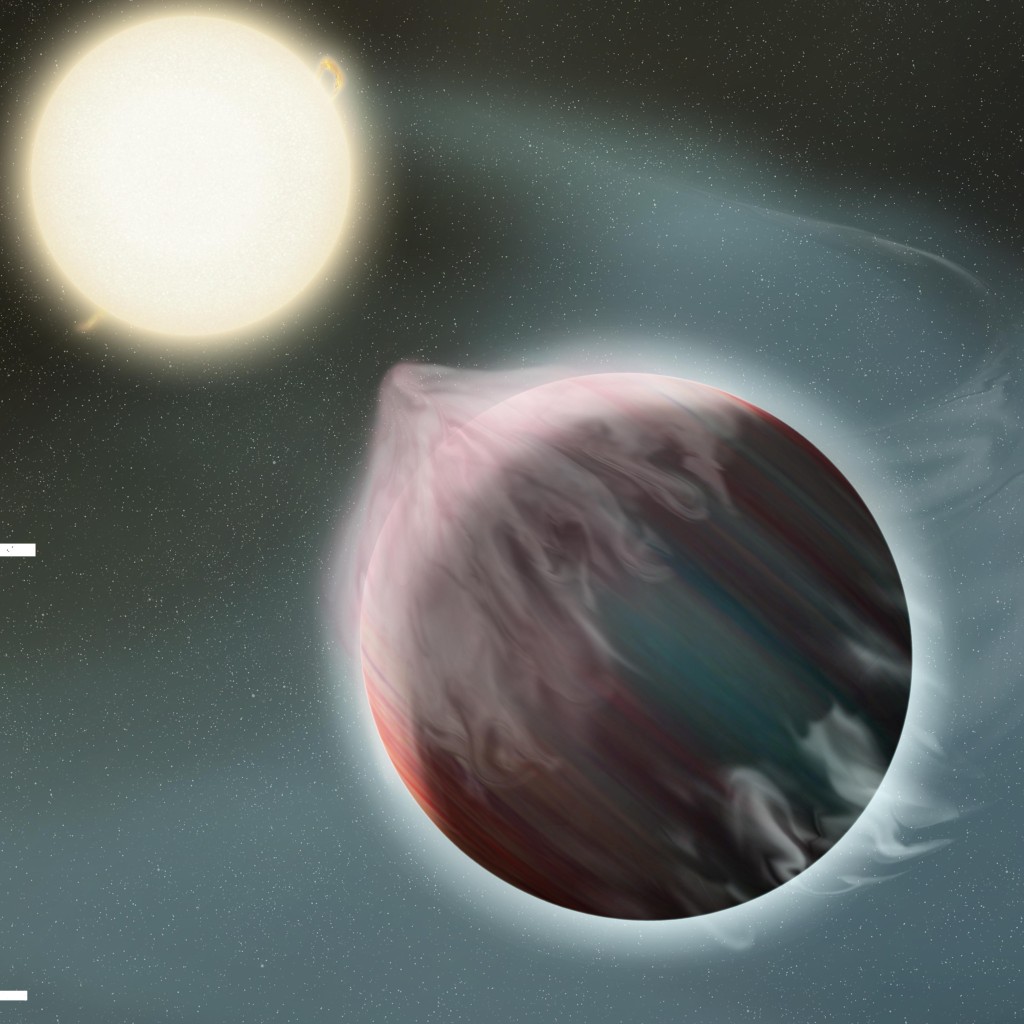Though worlds in our Solar System have been rocked by geological upheavals, mountain-shattering impacts, and climatic disasters throughout their histories, we think they have remained essentially intact. The planets we see today have been here since they first coalesced 4.5 billion years ago. But that long-lived stability may be the exception and not the rule. Indeed, astronomers now know many planets face destruction through what’s called tidal disruption, and recent searches have revealed direct evidence of the final moments for these doomed worlds.
Doom Deferred

With eight planets, hundreds of moons, and millions of asteroids, our Solar System is a surprisingly stable place. When Newton formulated his law of gravitation, he worried that the continual gravitational tugs among all these bodies might destabilize the Solar System. He suggested that God might periodically step in and re-stabilize the orbits. Later, his predecessor Pierre Simon Marquis de Laplace showed the tugs were actually pretty gentle and regular enough that the Solar System should remain stable.
And so this was the expectations astronomers had into the late 80s and early 90s as searches for extrasolar planets really ramped up: planets on well-separated and stable orbits, all very far from their host stars. Then in 1995, Michel Mayor and Didier Queloz discovered the gas giant 51 Peg b in an orbit a hundred times closer to its sun than Jupiter is to ours. (Incidentally, this discovery won them half the 2019 Nobel Prize in Physics.) So close to its star, 51 Peg b took only four days to complete an orbit.

With a planet that close to its star, astronomers worried that the tidal interactions between the planet and star could make the planet spiral into its star, to eventually be torn apart via tidal disruption. Similar tidal interactions were known to cause binary stars to spiral together over millions of years. But theorists showed that, even though 51 Peg b’s proximity to its star super-heats the atmosphere to almost 2000 degrees Fahrenheit (1000 deg C), it’s still far enough that tides are negligible.
Doom Discerned

That’s where things stood when I myself started graduate school in the early 2000s. Scientists were finding more and stranger extrasolar planets, some like planets in our Solar System, most not, but the planetary systems looked mostly like they were stable. One puzzling feature of their orbits stood out, though: unlike planets in our own Solar System, many exoplanets had highly elongated orbits (i.e., large orbital eccentricities). But planets closer to their host stars tended to have smaller elongations. This trend was exactly what we would expect if tides were at work since tidal influence gets stronger for closer-in planets.
For my dissertation work, my advisor suggested exploring how tides could have influenced the exo-orbits. Using models developed for the Solar System, we found that tides really could explain the trend and some of these planets like 51 Peg b started out with very elongated orbits. Then, over millions of years, tides made the orbits circular.
But that wasn’t all. The same tidal forces that circularized the orbits should also have made them smaller — a planet like 51 Peg b might have started out hundreds of times farther away than it is now. With its current circular orbit, 51 Peg b is safe now (at least for billions of years), but that’s not true for all the exoplanets close to their stars. Our work showed that, theoretically, many other planets discovered in even closer orbits than 51 Peg b’s are doomed to ultimate tidal disruption. It’s just a question of when, not if, they finally plunge into their stars.
Doom Detected

One of the predictions from my dissertation was that there ought to be planets all the way down to the surface of the star, driven there (in some cases) by tides. But it turned out that almost no one was really looking for planets so close to their stars. The planet-hunting algorithm behind NASA’s Kepler mission was intentionally masking out such close-in planets. (In fairness to the mission, they were focused on habitable planets, and we don’t expect planets so close in to be habitable.)
I say “almost” because two groups actually were looking for ultra-short-period planets, my group and Josh Winn’s group at MIT. In 2013, Winn’s group announced the first such planet, Kepler-78b. This planet clocked in at 8 Earth masses but circled so close to its host star, its year is only 8 hours long. This close to the star, Kepler-78b’s rocky dayside is completely molten, baked to incandescence by the star’s relentless heat. Shortly thereafter, more ultra-short-period planets were reported, and we now know something like 5 in 1000 Sun-like stars host such a planet.

Whether tides explains the origins of these planets is still unclear, but we now know for sure that tides continue to pose a hazard. Astronomers have directly observed the gas giant WASP-12b spiraling into its star — since its discovery in 2009, WASP-12b’s orbital period has gotten shorter by about a half second. Not much, but it means the planet will tumble into its star in about 3 million years, an astronomical blink-of-an-eye. And just last summer, astronomers observed the fiery glow of a planet taking its final plunge into its star.
So in spite of Newton’s faith and Laplace’s rationalism, it seems at least some planetary systems may truly be unstable. Indeed, this idea that planetary systems may often be unstable has prompted astronomers to wonder whether our Solar System went unstable in the past and lost a planet or two. Perhaps alien astronomers on a distant planet billions of years ago saw a fiery glow emitted from our own Sun as it swallowed one of its own.
Want to learn more about doomed worlds? Join Boise State Physics for our First Friday Astronomy lecture on Friday, February 1 at 7:30p MT and online at boi.st/astrobroncoslive. Dr. Elisabeth Adams will discuss her own search for these precarious planets.

